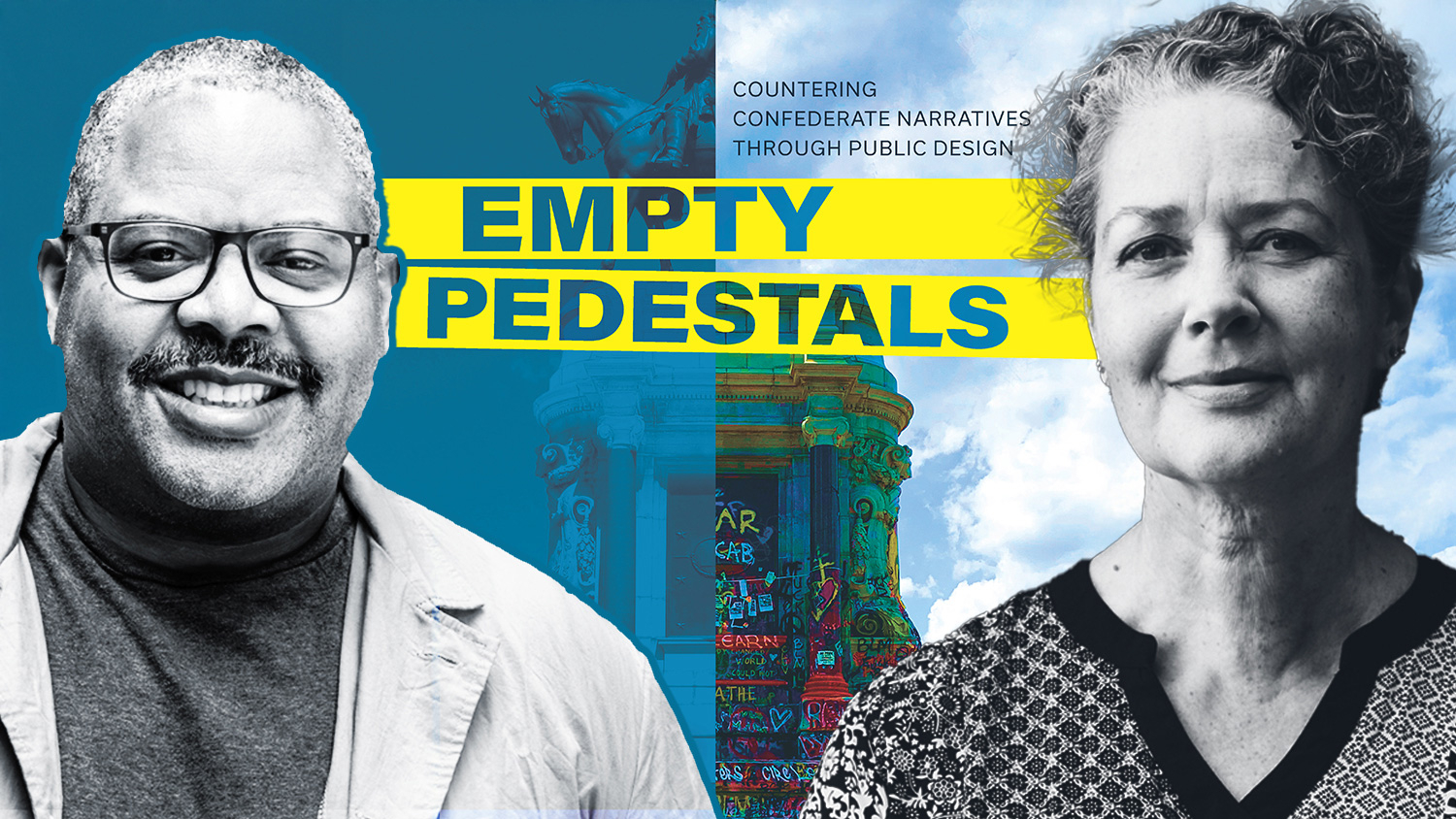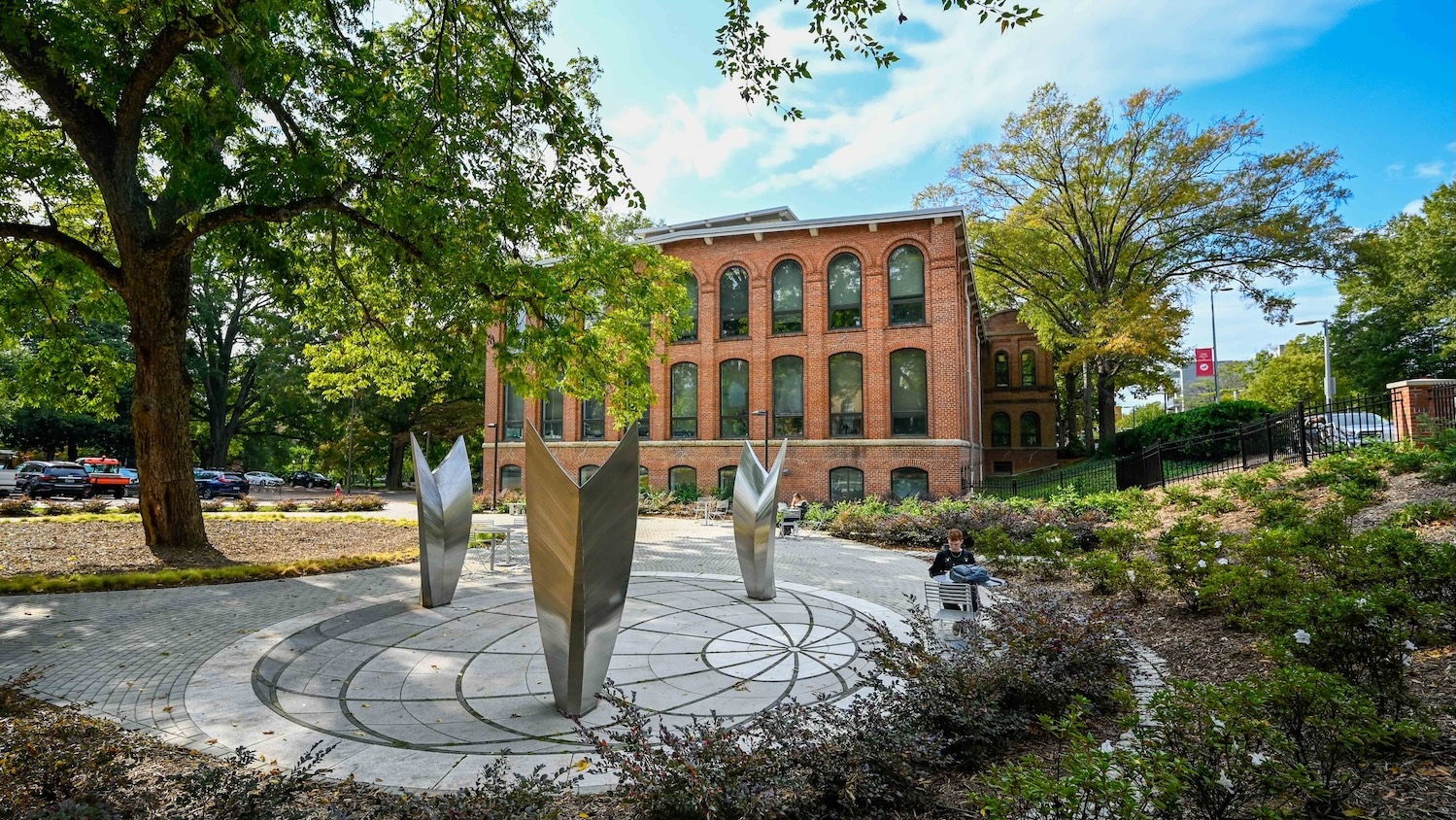Navigating an Unfamiliar Landscape
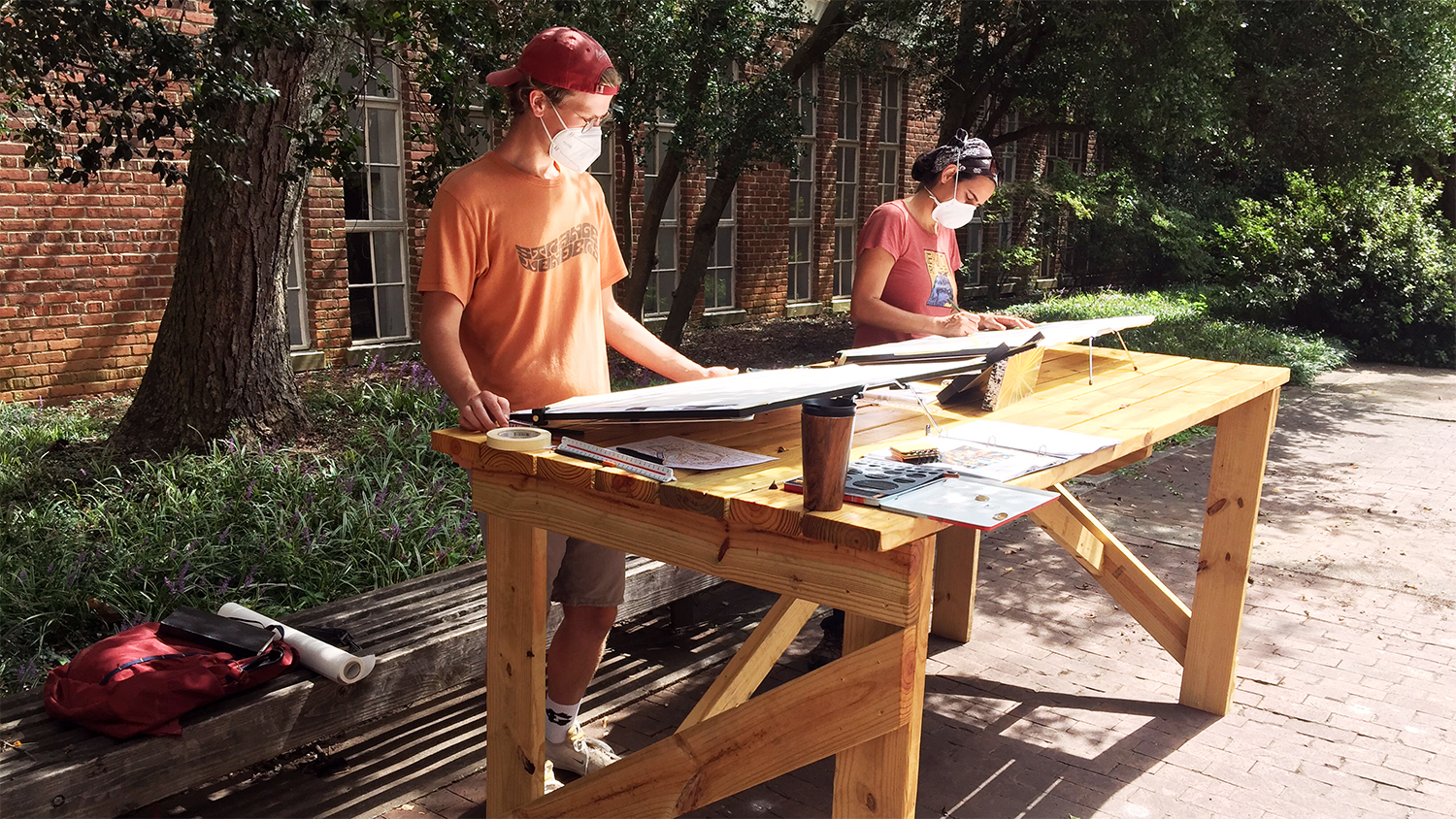
By Alex Fulton
Note: this article originally appeared in the Spring 2021 issue of Designlife Magazine.
College of Design faculty faced uncharted terrain – and persevered – when COVID-19 forced them to convert their landscape architecture studio to a hybrid model.
A change of scenery was in order when Gene Bressler and Carla Delcambre embarked on their fifth year of teaching an introductory graduate landscape architecture design studio.
Throughout the summer, the two eschewed their usual offices to meet in the North Carolina Museum of Art’s park. Their mission? To turn their typically hands-on course into a hybrid of online and in-person instruction amid the COVID-19 pandemic.
“We didn’t know what we were jumping into,” said Bressler. “Both of us were quite nervous about how we would teach a design studio, while dealing with COVID-related uncertainties, to first-year graduate students having no prior design experience.”
LAR 501 introduces the principles of design thinking and prepares students to create and evaluate landscape design. Studio work is crucial to its learning model.
The course kicked off in August, with roughly half of the 26-person class masked and spread across the second floor of Kamphoefner Hall. The other half attended remotely.
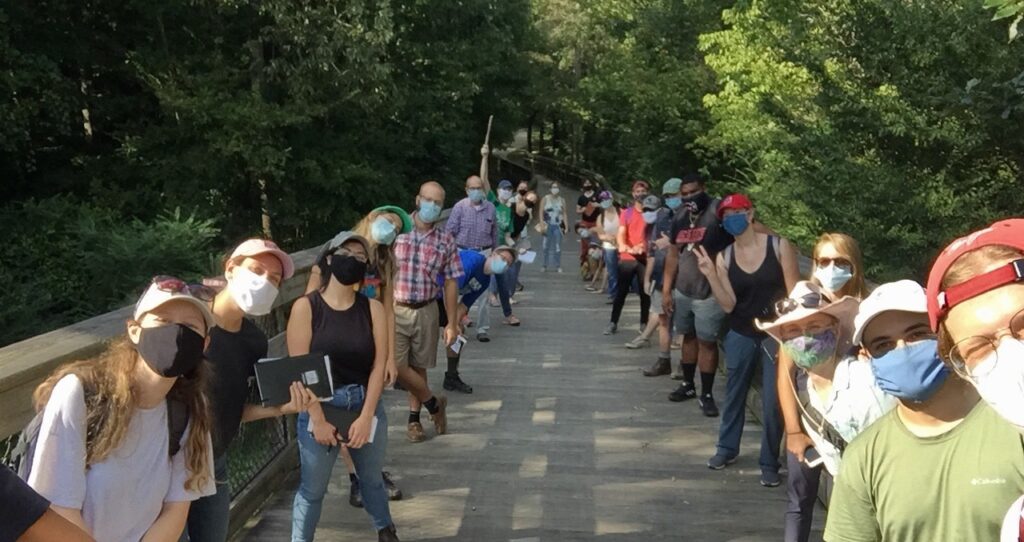
Breaking New (Virtual) Ground
Bressler and Delcambre teamed up with College of Design staff to make their hybrid studio successful. The Facilities team reconfigured their space to maximize social distancing, and Information Technology staff installed projectors so students could collaborate from afar.
The first big test came quickly. For their inaugural project, students constructed 3D landscapes out of chipboard. In previous years, they would huddle closely around their models and use scale figures to walk through each design. This year, though, they used a handheld camera to present their creations, which were displayed on large screens and shared with remote classmates via Zoom.
Online learning also introduced unforeseen benefits, such as allowing practitioners and alumni to interact with students remotely and flexibly. But it was field trips to outdoor destinations across the Triangle that threw the course’s subject matter into sharp relief.
“We took them to the Neuse River. You see people using inner tubes, playing and fishing in the water. It’s everything that we do,” said Delcambre. “Being outdoors is one of the best ways to understand what landscape architecture is about.”
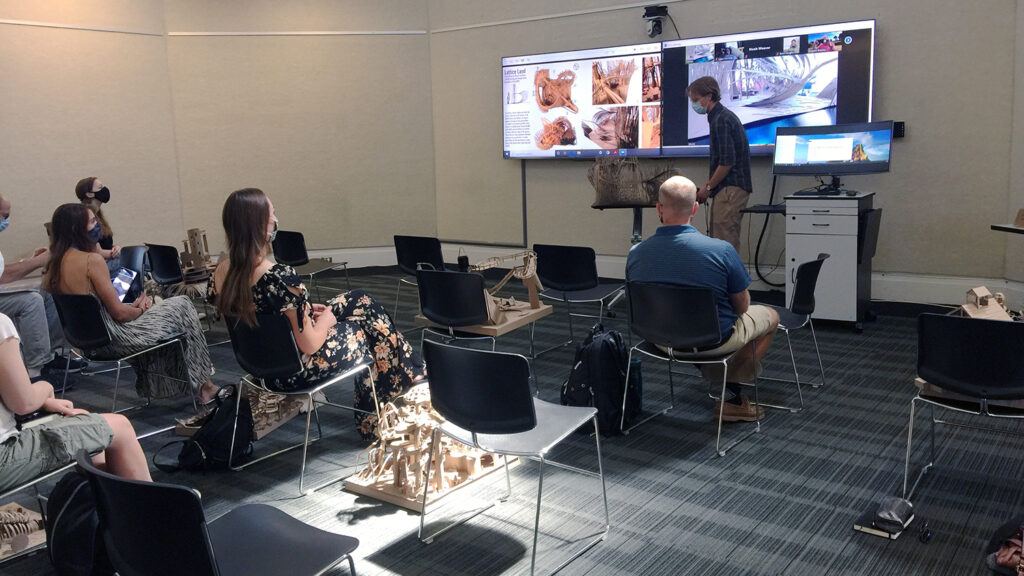
Finishing Strong
Bressler and Delcambre’s work to create a safe, supportive environment paid off.
“Every student came out of this experience with a sense of confidence and validation that they made the right decision to study landscape architecture at NC State,” Bressler said.
For him, the end of the semester also marks the end of a distinguished 49-year career. Bressler joined NC State’s faculty as head of the Department of Landscape Architecture and Environmental Planning in 2006, a position he held until 2018. Now he begins his retirement.
“I told Carla in June that this would probably be my last semester, and I wanted to make it my best. I think we came pretty close to that,” he said.
This post was originally published in College of Design Blog.

